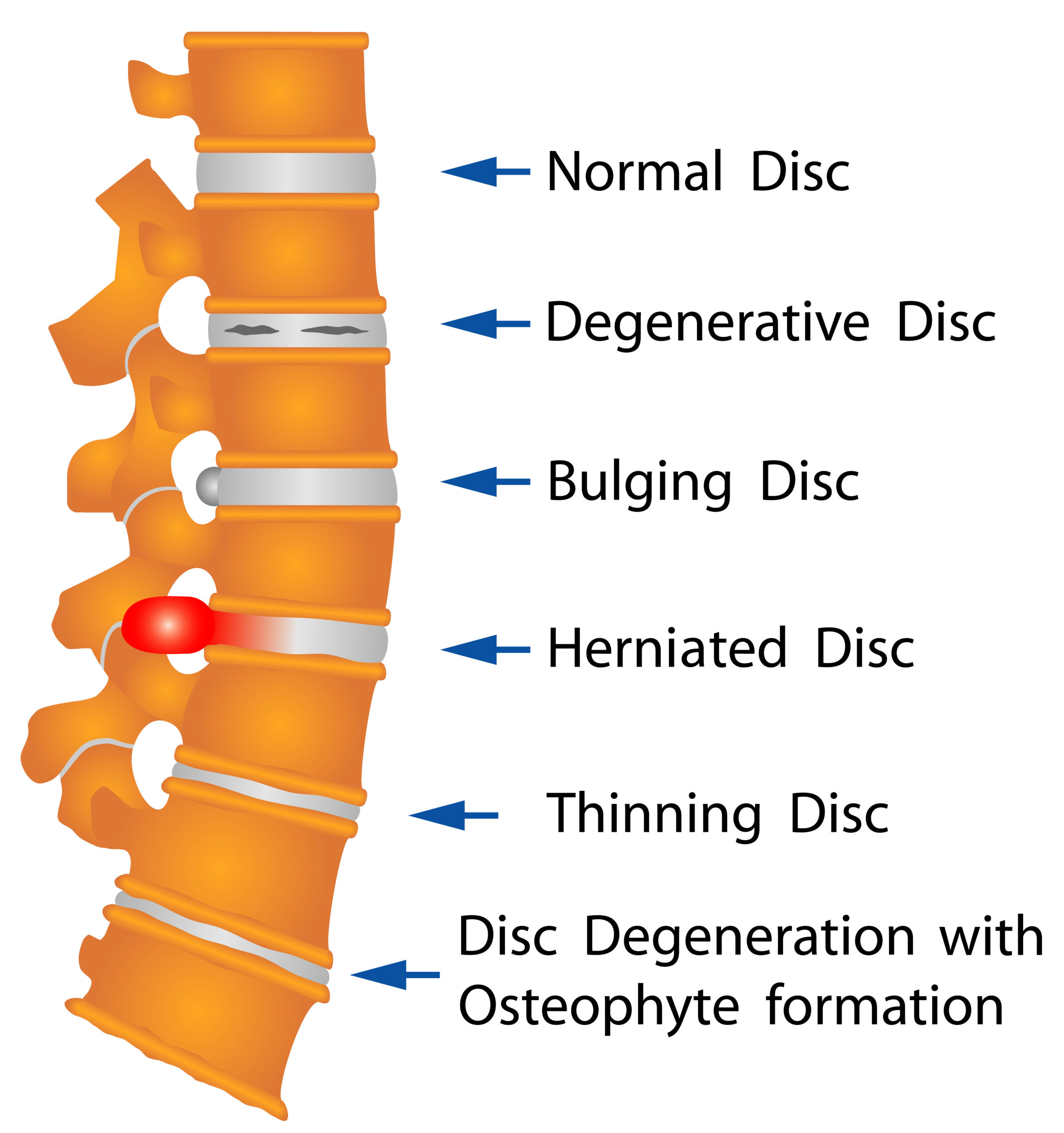Degenerated Discs
Degenerated discs are a common back problem. The spinal discs, which are soft, gelatinous cushions that separate the vertebrae, wear down during the aging process. Because the discs function as between-the-bones shock absorbers, allowing the spine to bend and twist, this deterioration can result in serious back pain. As discs are damaged or wear away, the amount of space between the vertebrae gets smaller. As the space narrows, joints are placed under greater stress, resulting in further degeneration.
Risk Factors For Degenerated Discs
Although discs degenerate to a degree from normal aging, there are risk factors that increase the likelihood of symptomatic disc degeneration. They include the following:
- Repeated heavy lifting
- Obesity
- Smoking
- Bone spurs
An acute injury to the back also increases the potential for disc degeneration.
Symptoms Of Degenerated Discs
Degenerated discs are often painless. When they do become painful, the associated pain is mostly central (located in the midline). It may radiate into buttocks or thighs. It frequently does not radiate past the knees. This type of pain is often worse when sitting, lifting, bending or twisting, and walking or lying down typically helps alleviate the pain. This particular variety of pain is called as DISCOGENIC PAIN.
Diagnosis Of Discogenic Pain
Degeneration of discs is commonly seen on MRI scans. As many as one-third of health adults with no back pain might show degeneration of spinal disc on MRI scans. Simply having a degenerative disc on your MRI scan does not confirm it as the cause of your back pain. In order to diagnose “discogenic pain” (pain related to degenerated disc), a physician takes a detailed medical history, and performs a comprehensive physical examination that includes checking for numbness or weakness, and testing reflexes to determine whether any muscles have atrophied. Here is a good list to see if you are suffering from disc related low back pain (discogenic pain):
- Pain is typically in the center of your back
- Pain is not radiating below your knees
- You would prefer to walk a mile or rather than sit for an hour
- Your back pain increases with sitting
- Pain increases work bending forward
- Pain increases with coughing or sneezing
- Pain increases with axial rotation or twisting/turning on your back
- Sustained hip flexion (SHF) test: Lie down on your back and lift both your legs to the ceiling at 90 degrees. Now, slowly lower your legs to the floor/table. If your back pain increases, it indicates that you are suffering from discogenic low back pain.
Several imaging examinations may also be administered; they include X-rays, to assess spine alignment; MRI scans, to observe any compression of the spinal cord and to confirm severity of disc degeneration; and CT scans, to evaluate the size of the spinal canal and visualize bone spurs. In a handful of cases, provoking disc pain by injection of a contrast material inside the disc (provocative discography) might be utilized to confirm the diagnosis. This test, despite being controversial, can identify one painful disc, when your MRI shows several degenerative discs.
Complications Of Degenerated Discs
Although a disc can degenerate anywhere along the 26 vertebrae of the spine, it happens most frequently in the lumbar region (lower back) or the cervical region (neck). In addition to pain, degenerated discs can result in complications that include the following:
- Osteoarthritis
- Herniation of a disc
- Spinal stenosis (narrowing of the spinal canal)
- Bone spurs
Any of these complications can worsen the patient’s condition.
Treatment Of Degenerated Discs
Degenerated discs are mostly painless. In most cases, the findings of degenerated discs on MRI are incidental. In simpler terms, they might be present on MRI, but their presence foes not confirm they are the source of pain. Usually, your doctors has to take a detailed history, examine you well, and rule out few conditions before they are believed to be the source of pain. You should try chiropractic treatment, physical therapy or acupuncture as the initial treatment options. If you have failed these treatments for more than 3-4 months, it is time to see a spine pain specialist. Some of the treatment options available at this stage include:
- Epidural Steroid Injection
- Intradiscal Electrothermoplasty (IDET)
- Intradiscal Biacuplasty (IDB)
- ViaDisc Allograft
- Intracept
If a patient’s back pain does not respond to these conservative treatments, surgical intervention may be required. In general spinal fusion is avoided as much as possible.


